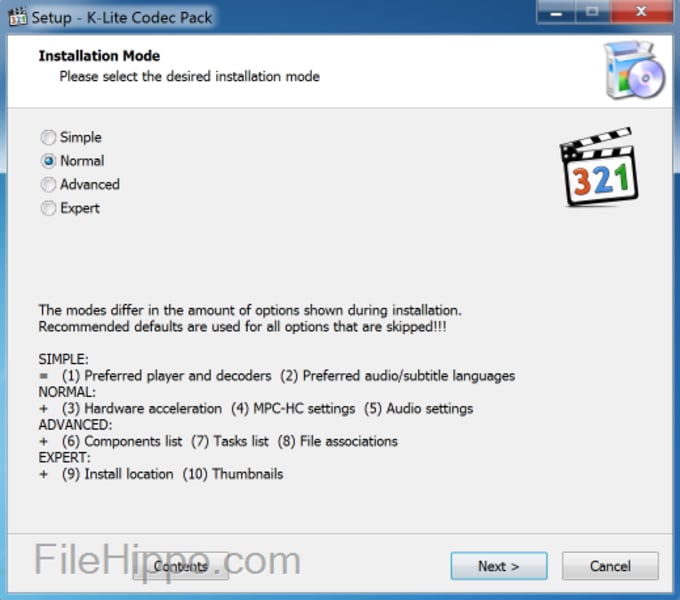

- Codec decoder windows media player install#
- Codec decoder windows media player full#
- Codec decoder windows media player software#
- Codec decoder windows media player Pc#
Codec decoder windows media player software#
Some 3rd party hardware and software decoders only decode WMVA based content. There are slight bitstream differences between WMVA and WVC1, so consequently WMVA is handled by a different DirectShow decoder than WVC1.
Codec decoder windows media player install#
The codec was distributed with Windows Media Player 10 and Windows Media Format SDK 9.5 install packages. WMVA was the original implementation of WMV Advanced Profile prior to the acceptance of the VC-1 draft by SMPTE.

These titles are encoded with WMV3 Main Profile High Level This codec also supports professional-quality downloadable video with two-pass and variable bit rate (VBR) encoding." Ī number of high definition movies and videos have been released commercially in a format dubbed WMV HD.

"It provides support for a wide range of bit rates, from high-definition content at one-half to one-third the bit rate of MPEG-2, to low-bit-rate Internet video delivered over a dial-up modem. The Windows Media Video 9 (WMV3) codec implements the Simple and Main modes of the VC-1 codec standard, providing high-quality video for streaming and downloading. Whereas WMV3 progressive encoding was implemented using the YUV 4:2:0 color sampling scheme, the deprecated interlaced mode was implemented using the less common YUV 4:1:1 sampling scheme. An interlaced encoding mode was implemented, but quickly became deprecated when Microsoft started implementing WMV Advanced Profile. The WMV3 codec was designed to primarily support progressive encoding for computer displays. The Simple and Main Profiles of VC-1 remained completely faithful to the existing WMV3 implementation, making WMV3 bitstreams fully VC-1 compliant. The VC-1 codec specification has so far been implemented by Microsoft in the form of 3 codecs, each identified with a unique four character code. On August 24, 2012, the Raspberry Pi Foundation announced hardware decoding support for VC-1. VC-1 is supported in the PlayStation 3 console and the FFmpeg project also includes a VC-1 decoder.
Codec decoder windows media player Pc#
By means of an Octoupdate, all formats of Windows Media Video could be played on the Xbox 360 from a disc, USB storage device, or streaming from a PC via Windows Media Connect/Windows Media Player 11.
Codec decoder windows media player full#
Microsoft designated VC-1 as the Xbox 360 video game console's official video format, and game developers could use VC-1 for full motion video included with games. Windows Vista partially supports HD DVD playback by including the VC-1 decoder and some related components needed for playback of VC-1 encoded HD DVD movies. The main goal of the development and standardization of the VC-1 Advanced Profile was to support interlace-optimized compression of interlaced content without first converting it to progressive scan, making it more attractive to broadcast and video industry professionals using the 1080i format.īoth HD DVD and Blu-ray Disc adopted VC-1 as a supported video format, meaning their video playback devices are required be capable of decoding and playing video-content compressed using VC-1. The Advanced Profile of VC-1 contains tools designed for coding interlaced video sequences as well as progressive scan video. It was widely characterized as an alternative to the ITU-T and MPEG video codec standard known as H.264/MPEG-4 AVC. VC-1 is an evolution of the conventional block-based motion-compensated hybrid video coding design also found in H.261, MPEG-1 Part 2, H.262/MPEG-2 Part 2, H.263, and MPEG-4 Part 2.


 0 kommentar(er)
0 kommentar(er)
